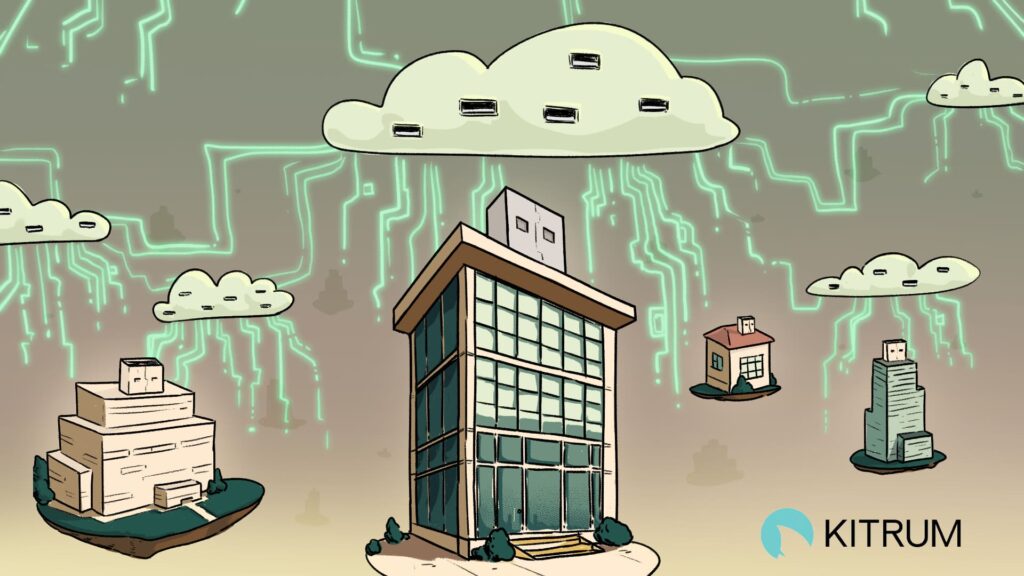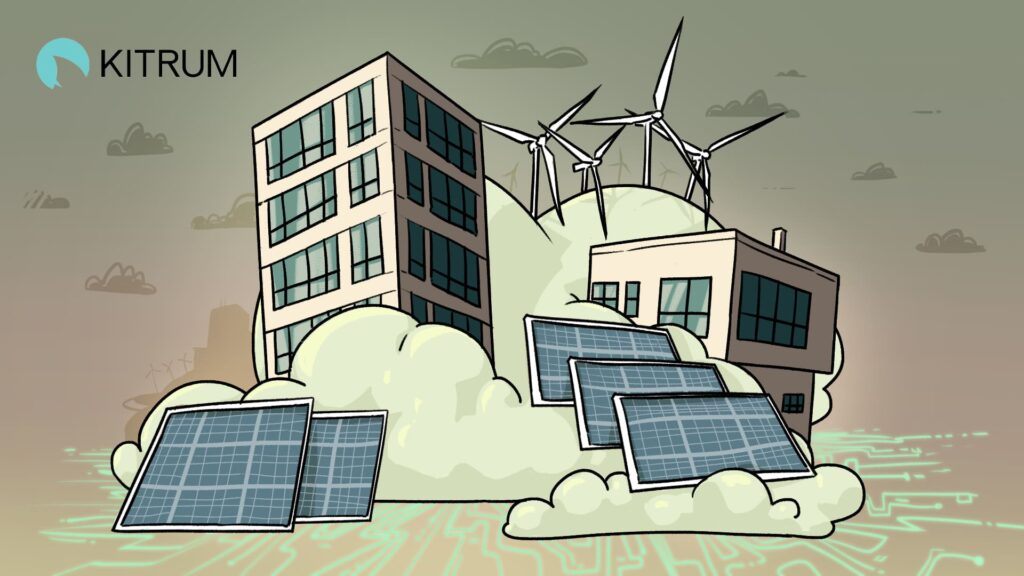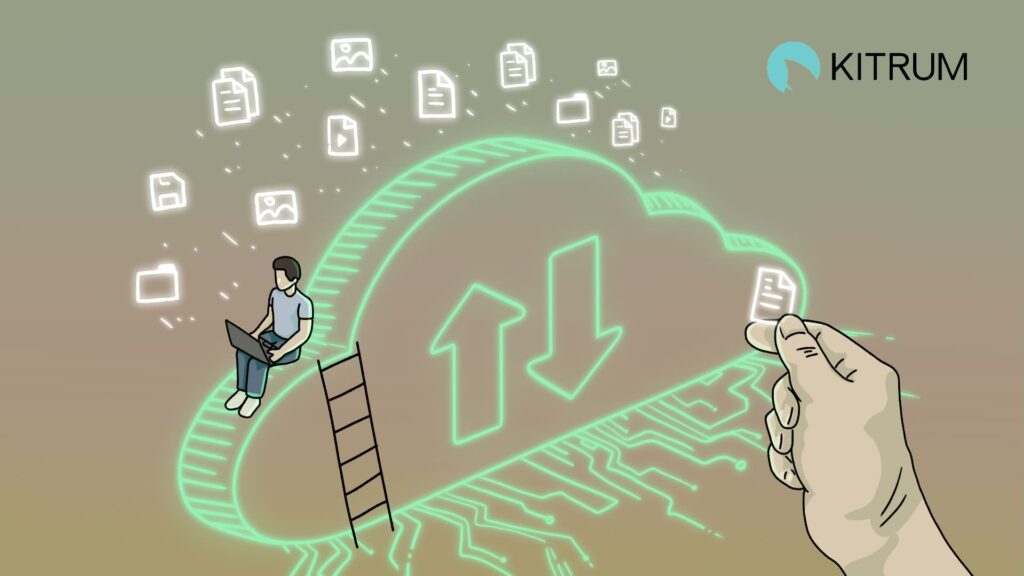Imagine the pollution from 22 million cars disappearing from our streets. It might sound like magic, but this could be a reality. According to Accenture’s insights, by shifting from regular on-premise data centers to green cloud computing, we could witness a remarkable annual reduction of 59 million tons of carbon dioxide emissions.
Sustainable software engineering while using technology has become essential for us. We can’t ignore how technology affects the environment, and that’s where “green cloud computing” comes in – the practice of using resources and making choices to ensure the well-being of the Earth and its ecosystems.
In this article, we’ll delve into the concept of green cloud computing and explore how moving to the cloud can contribute to sustainability.

What is green cloud computing?
Green cloud computing is when a company that provides cloud services follows rules to use less energy and create less pollution. They do this by using only renewable electricity, like solar or wind power, to run their own data centers and also data centers from other companies. The goal is to be environmentally conscious while still offering digital services.
For example, a company like Google has fully embraced Green Cloud Computing. Its customers already benefit from carbon neutrality achieved since 2007 and purchase solar and wind energy to match their global electricity consumption. Google’s new goal is to operate on carbon-free energy 24/7, everywhere, by 2030.
Google empowers customers to make sustainable choices by disclosing carbon information about their Cloud regions. Thus, Google introduced a tool that assists in region selection based on factors like sustainability. It highlights low-carbon impact regions in the Cloud Console. This information influences decisions positively. Users exposed to this feature were 19% more likely to pick a low-carbon region for their Cloud Run service.

What are the 5 key features of cloud computing?
Green cloud computing encompasses several features that contribute to its environmentally friendly and sustainable nature. Here are some key features:
- Renewable energy usage;
- Energy-efficient data centers;
- Virtualization;
- Multitenancy;
- Sustainability reporting.
How does Cloud improve sustainability?
So, why is moving to the cloud important? At its core, moving to the Cloud can revolutionize your operations, driving efficiency, scalability, and sustainability at your company. With advanced technologies and optimized resource usage, the cloud empowers you to improve productivity while reducing energy consumption and environmental impact. Here are ways that Cloud offers in order to improve sustainability and reduce the environmental impact of technology operations:
- Energy efficiency: Cloud providers optimize their data centers for energy efficiency, using advanced cooling systems, efficient hardware, and innovative designs. This reduces the overall energy consumption required to run services.
- Resource optimization: Cloud services allow for dynamic allocation of resources, meaning computing power and storage are used only when needed. This prevents over-provisioning and reduces the waste of computing resources.
- Virtualization and server consolidation: Cloud platforms use virtualization technology to operate numerous virtual machines on a solitary physical server. This consolidation decreases the required physical servers, leading to energy savings.
- Shared resources and multitenancy: Cloud environments enable sharing resources among multiple users, reducing the need for duplicated hardware and minimizing resource waste.
- Renewable energy integration: Green cloud computing involves powering data centers and cloud infrastructure using renewable energy sources like solar, wind, and hydropower, reducing reliance on fossil fuels.
- Extended hardware lifecycles: Cloud migration reduces the need for constant hardware upgrades, extending the lifespan of equipment and decreasing electronic waste.
- Data enter location and cooling efficiency: Cloud providers strategically locate data centers in cooler climates and employ efficient cooling techniques, decreasing energy consumption associated with cooling.
- Carbon footprint reduction: By optimizing energy usage and resource allocation, cloud computing reduces the carbon footprint of IT operations, making them more environmentally friendly.
- Remote work support: Cloud services facilitate remote work, reducing the need for daily commuting and the associated carbon emissions from transportation.
- Scalability: Cloud services provide the capability to adjust the scale of business operations in response to demand fluctuations, offering the flexibility to expand or contract as needed. This prevents over-provisioning and minimizes resource waste during periods of low demand.
- Innovative cooling techniques: Some cloud providers employ innovative cooling methods, such as using natural air cooling or liquid cooling systems, which improve energy efficiency and reduce cooling-related emissions.
- Reduced paper usage: Cloud-based applications and storage decrease the need for physical paperwork, reducing paper consumption and promoting a more sustainable approach to information management.
Ok, how to migrate to Cloud?
Migrating to the cloud is a strategic step that requires careful planning and execution. Before initiating the migration process, companies must thoroughly assess any legal or compliance restrictions that might impact the move. This includes understanding industry-specific regulations and data protection requirements to ensure that the chosen cloud provider aligns with these standards.
At the same time, it’s important to consider what different cloud providers offer and how much they charge. Finding the right balance between following rules, having the features you need, and not spending too much money is also important for your business. This balance can significantly affect how well your move to the cloud works.

It’s crucial to identify all the software and applications you plan to move to the cloud. This means you must look at the software you’re using and understand how different parts connect. This information forms the basis for creating a solid plan to migrate everything. Once you have a clear idea of what needs to be moved, the next step involves assembling a skilled team of developers and administrators. These experts will be responsible for moving the applications and data to the cloud environment. They’ll ensure the transition goes smoothly and establish effective ways to monitor and manage everything in the cloud.










